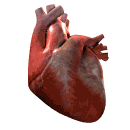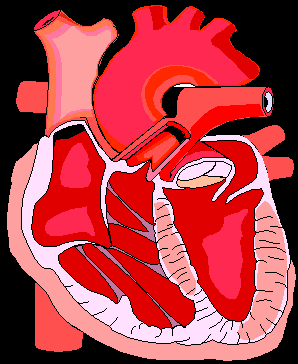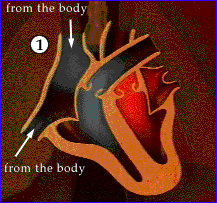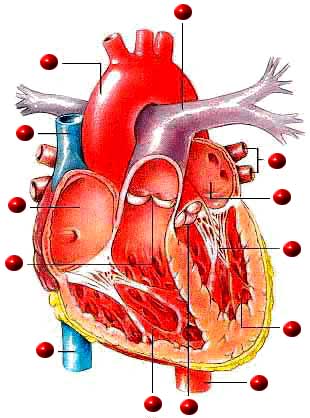
![]()
 Blood Flow
Blood Flow
The aorta--the largest artery
of the body--leads from the left ventricle and supplies the body with oxygenated
blood. The pulmonary artery--leading from the right ventricle--divides
into 2 branches that supply blood to the lungs. Blood that has been refreshed
by the lungs is returned to the heart through the pulmonary veins, which
lead to the left atrium. The venous blood from the arms, legs, torso, and
head is channeled to the superior (upper) vena cava and inferior (lower)
vena cava and is
directed into the right
atrium. The various valves of the heart ensure that blood flows through
the heart in only one direction. The ventricles are divided by a thick
muscular wall called the
ventricular septum.

Pictures of the heart with
trouble
![]()
Day and night, the muscles of your heart contract and relax to pump blood throughout your body. When blood returns to the heart, it follows a complicated pathway. If you were in the bloodstream, you would follow the steps below one by one.

![]()

![]() Functions of different parts of the heart
Functions of different parts of the heart
![]()
![]()
![]()
![]()
![]()
![]()
![]()
![]()
![]()
![]()
![]()
![]()
![]()
![]()
![]()